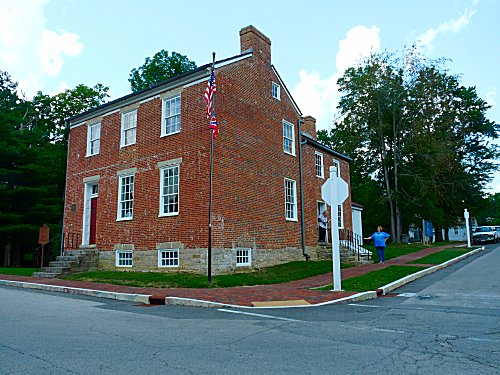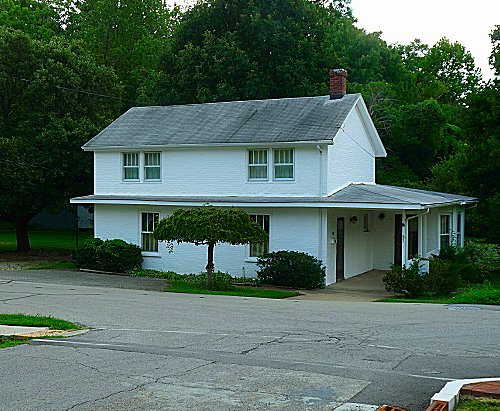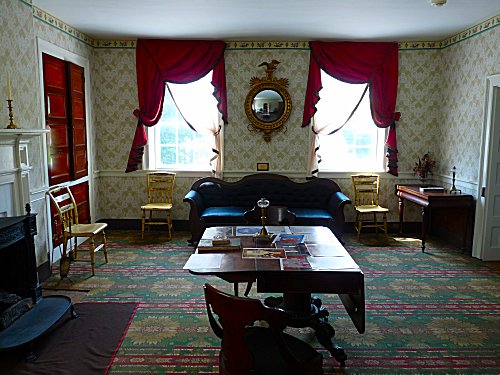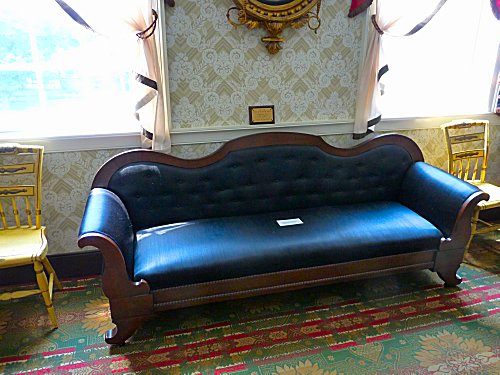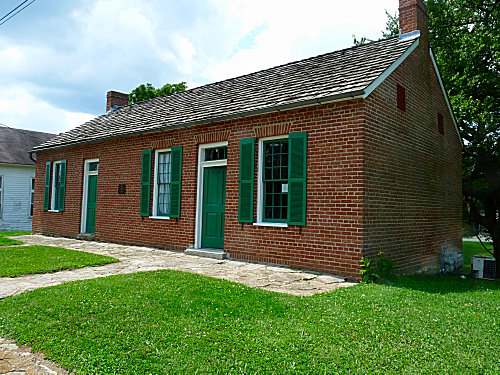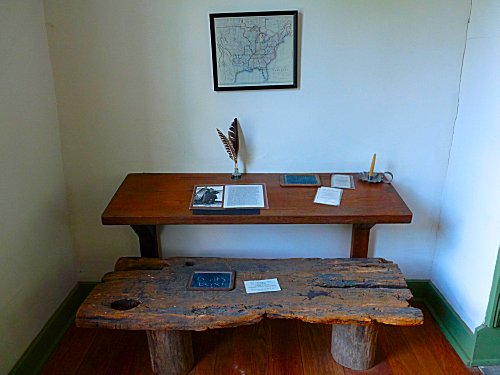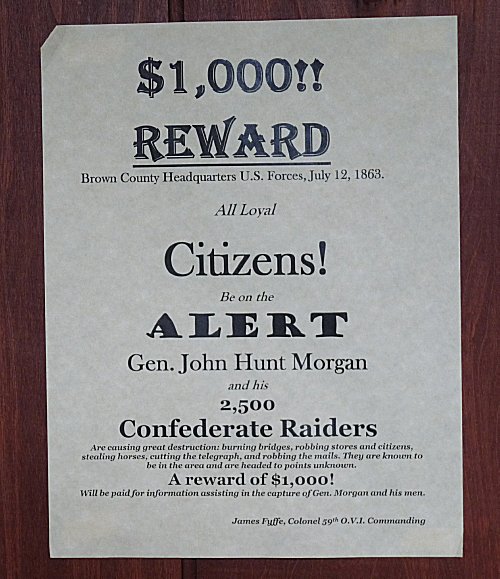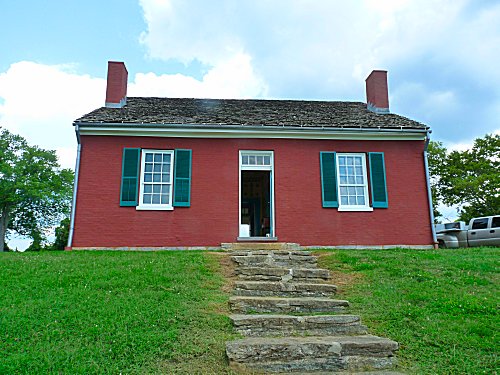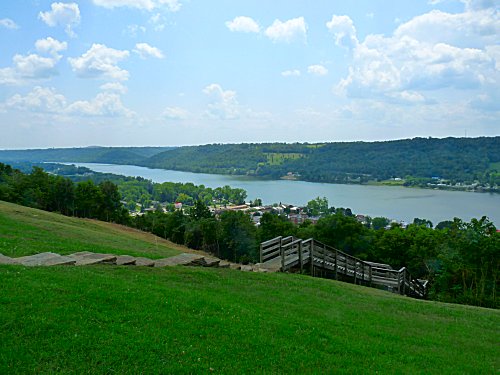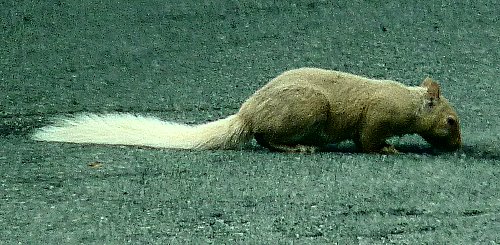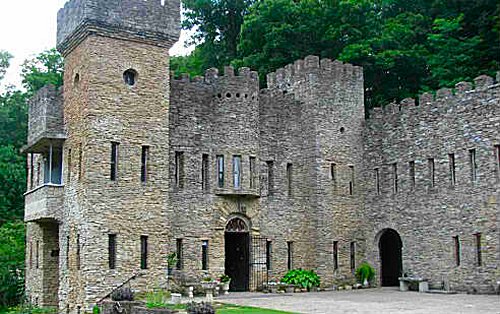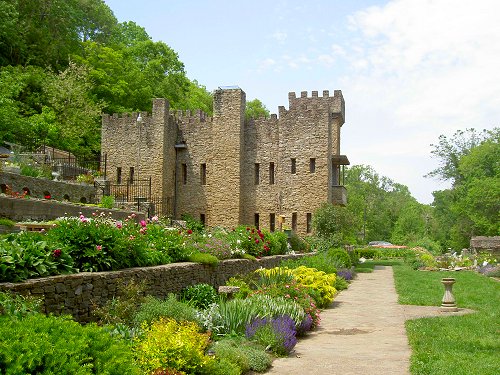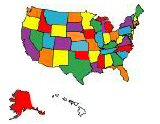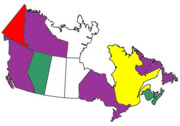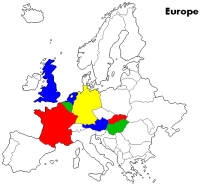Wanted: $1000 Reward . . .
Today was another tourist day for us. so we all headed out about 10:30 on our way south, to Georgetown, OH. to visit President U. S. Grant’s boyhood home and other sites. So after a quick stop at the Post Office in Wilmington, we headed down US 68 for Georgetown, about an hour away.
Grant’s boyhood home was built in 1823 by his father Jesse, and Grant lived here until he was 17, and left to attend West Point in 1839. And in a strange twist, going to West Point accidently changed Grant’s name.
His real name was Hiram Ulysses Grant, but realizing his initials on his trunk would HUG, he was afraid he would be teased, so he submitted his application under the name of Ulysses Hiram Grant. But the Senator who recommended him, mixed up his name even further, submitting it as Ulysses Simpson Grant.
When Grant got to West Point, he found out they didn’t have an opening for Ulysses Hiram Grant, or even for Hiram Ulysses Grant, but they did have one for Ulysses Simpson Grant. So he decided his name was now U.S. Grant. Anything was better than HUG.
His father owned a tannery right across the street which is also still standing.
It’s amazing how much of the original furniture is still in the house.
Our next stop was right down the road where Grant attended school from 2nd grade to the 8th grade
And they’ve still got the desk he used.
And they also had this Wanted Poster for one of Jan’s ancestors. John Hunt Morgan of Morgan’s Raiders fame . . . or infamy, depending on which side you were on during The War of Northern Aggression.
Leaving Georgetown we headed further south down on the Ohio River to Ripley, OH, and the home of John Rankin, one of the leading Abolitionists during the period.
Rankin’s house sat on a high hill overlooking the Ohio, and served as a beacon for slaves escaping from Kentucky right across the river. Rankin’s home was one of the first stops on the Underground Railroad, and it’s estimated over 2000 slaves passed through his hands on their way to freedom.
Leaving the Rankin house and heading back down the hill, we encountered something none of us had seen before: A blonde squirrel.
This photo was taken through the windshield so the coloring is a little off, but in the sunlight he seemed to be the color of a palomino horse. And like a palomino’s mane, his tail was much lighter than his body, almost white. The Internet has a lot of pictures of these, but no real explanation as to what they are. They’ve definitely not an albino of any type.
After stopping off at Rankin’s gravesite in town, we made another cemetery stop up the road a ways to the grave of Rose Washington Riles, otherwise known as Aunt Jemima, or at least one of them. Apparently there have been 6 ‘official’ Aunt Jemima’s, and a bunch of regional ones. Reading online it’s a pretty convoluted story.
Heading west along the Ohio River, we stopped off at Point Pleasant, OH to check out Grant’s actual birthplace where he lived until the age of 1, when his parents moved to Georgetown
At that point we turned north, heading for Loveland, OH, on the eastern outskirts of Cincinnati, and after a quick stop at a Chase Bank we arrived at our dinner location, the Montgomery Inn. We had heard good things about their BBQ. And the menu said that every President since Gerald Ford had eaten there.
The ribs, their specialty, were pretty good, with a sauce that was different, but very good. However, the pulled pork was more like what we called ‘Chopped’ in Texas. And like we’ve encountered before up in this area, the Beef Brisket is more like Roast Beef with BBQ sauce on it, rather than the Brisket we get in Texas.
But the Ice Tea was really, really good. What can I say?
Our last tourist stop for the day was Loveland Castle, or Chateau Laroche. Unfortunately they were already closed, and good pictures were hard to come by, so I got these from their website
Construction was begun in 1929 by Boy Scout troop leader and World War I veteran Harry D. Andrews, who said this about the project:
“Chateau Laroche was built as an expression and reminder of the simple strength and rugged grandeur of the mighty men who lived when Knighthood was in flower. It was their knightly zeal for honor, valor and manly purity that lifted mankind out of the moral midnight of the dark ages, and started it towards a gray dawn of human hope.”
Apparently Andrews built the place pretty much by himself over the next 50 years, assisted by the Boy Scout troop he found, The Knights of the Golden Trail.
Reading about the castle and its builder on the Roadside America, Loveland Castle page, it kind of reminds me of Edward Leedskalnin, the guy who built the Coral Castle down in the Miami FL area.
Our last stop of the day was a nearby Barnes & Noble for a few magazines, before we finally headed home.
Another long, but fun day.
________________________________________________________________
Thought for the Day:
According to an audit by the Treasury Inspector General for Tax Administration (TIGTA),.Special Agents at the IRS accidentally shot their firearms 11 times between 2009 and 2011, and at least three of the cases “may have resulted in property damage or personal injury.”
In fact, these 11 ‘accidents’ were 3 times the number that they intentionally fired their firearms in the field.
Don’t you feel safer now?
gafdfds



